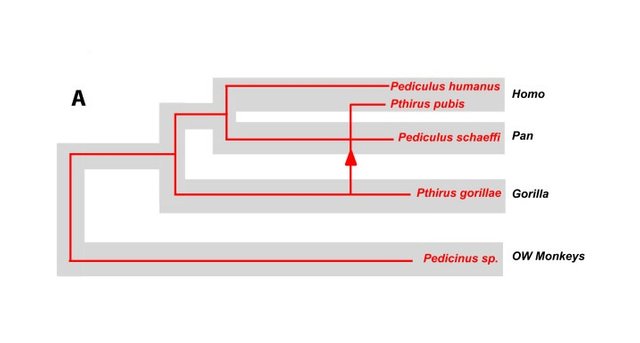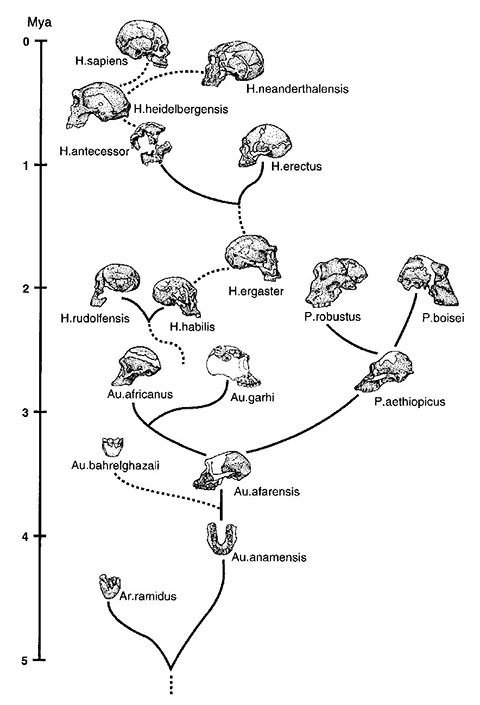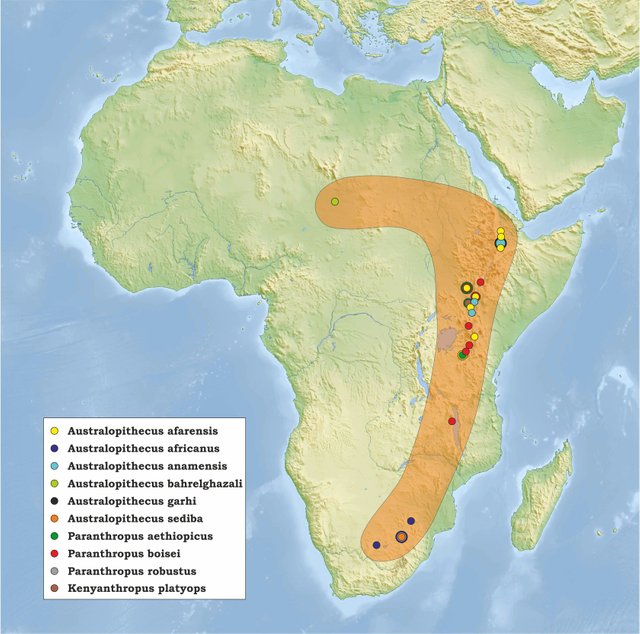The "companion-species" hypothesis, a new model for the evolution of eusociality in humans
Sudmant et al published a paper[1] in 2013 on a genome sequence analysis of the speciation of gorillas, humans and chimpanzees. Their data shows that there was a gene deletion event in the chimpanzee lineage 3 million years ago, and that event could, from my perspective, be interpreted as gene transfer between the human lineage and gorilla lineage, or vice versa. The paper interprets the data as that 59 genes were lost in the chimpanzee-lineage, seen from that those genes are still remnant in the human and gorillae lineage.
Reed et al showed that the Pthirus gorillae spread to extant humans via a host switch 3.3 Ma[2]. The lice on gorillas are found in the groin and the armpits primarily (where humidity is likely highest). It is known that they use more of the body than just the groin region.

In humans, pubic lice usually spread through sexual contact. That there was gene transfer between the human lineage and gorilla lineage around 3 million years ago (shown in the data in Sudmant et als paper, where they interpret it as gene deletions in chimpanzees) and also a host switch resulting in human pubic lice (Reed et al), could be explained with an interbreeding event set at 3.3 Ma.
Paranthropus appears in the fossil record roughly 2.7 million years ago, and is is thought to be bipedal based on its anatomical structure in its hips, legs, and feet that resemble both its ancestor, Australopithecus afarensis, and modern humans. The Paranthropus lineage is further characterised by robust craniodental anatomy, including gorilla-like sagittal cranial crests, which suggest strong muscles of mastication, and broad, grinding herbivorous teeth.

The same event that led to gene transfer from the gorilla lineage to the human lineage 3.3 Ma, and the Pthirus gorillae host switch, could also have resulted in the Paranthropus lineage.

The evolution of eusociality, cast-based organization and division of labour
Humans are the only mammal that are eusocial, and would possibly have had an evolutionary history that is unlike other mammals. Eusociality may be limited by that a species shares the same gene pool, so it is difficult to get “labour dimorphism” and division of labour. Technology of course extends the phenotype beyond the gene pool, but at an early stage perhaps a two-species scenario could explain some things.
Paranthropus are found along the rift valley, together with Australopithecines and Homo, and within a model where they are offsprings of interbreeding between the gorilla lineage and human lineage, and had certain adaptations that complemented Homo, not burdened by the loss of olfaction that characterizes humans, and also more muscular, they could have become a “companion-species” to Australopithecines and Homo.
This two-species society could have introduced a natural hierarchy and division of labour, as a “petri dish” for the evolution of eusociality, rudimentary adaptations that were later on co-opted, through technology and more advanced memetic evolution, for even more eusociality.

References
Evolution and diversity of copy number variation in the great ape lineage
Pair of lice lost or parasites regained: the evolutionary history of anthropoid primate lice
Notes
“The cave was discovered in 1948, and initial excavations were carried out by paleontologist Robert Broom. His team uncovered several remains of Paranthropus robustus and early Homo species. It was the first site at which both Paranthropus and Homo had been found together, indicating that they were contemporary.[4] “
https://en.wikipedia.org/wiki/Swartkrans
its great to see how this has evolved over the years
Interessing post thanks for sharing
I am amazed to get such an information that provide me information about our existence and how we evolve thanks for sharing such a relevant information to us.
According to the interesting fact that you had described here as we are evolving from not just a few years but from 3 millions year ago well its itself very interesting. And as of now what we are right here is actually does not find any connection with those pieces thank you
Pretty useful information and the evolution seems to be great from the years back .